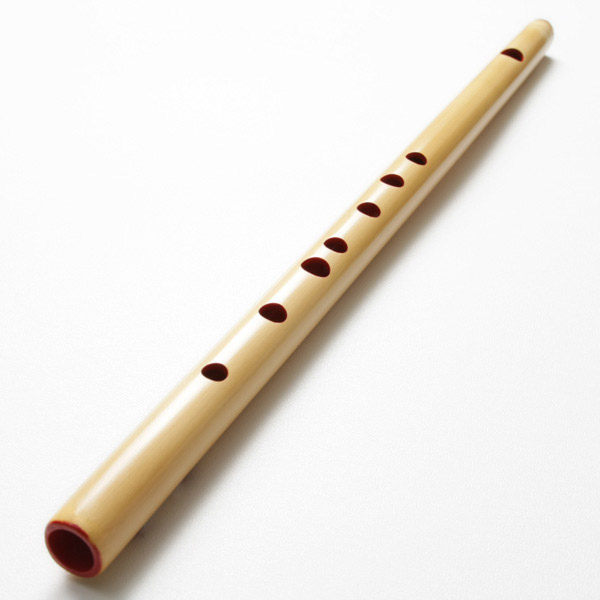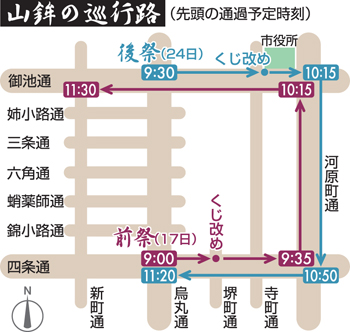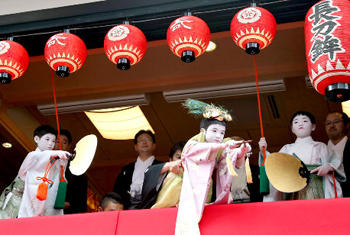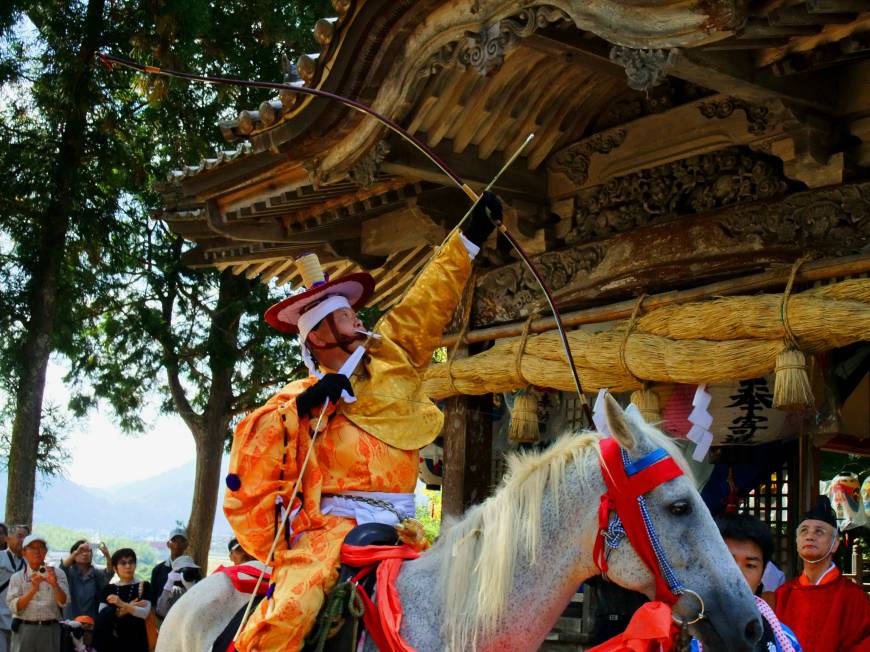
An archer opens the festival (this photo and those below by Angeles Marin Cabello)
Yabusame Archers of the Lonely Chugoku Mountains
BY STEVE JOHN POWELL JUL 19, 2014 Japan Times
What are those peculiar scarecrow figures, lolling about the villages of the Chugoku Mountains? Is that a man fishing from a bridge? A couple leaning against a railing? A whole family in a field? Some are dressed in kimono or peasant costumes, others are in jeans; they’re all so lifelike we almost stopped to ask one for directions.
My wife, Angeles, and I have driven up to these mountain villages in Hiroshima Prefecture in search of a yabusame (traditional archery on horseback) display. Yabusame originated in the sixth century, as a form of ritual prayer for warriors seeking health and good fortune. During the Kamakura Period (1185-1333) it was only performed in shrines and developed into a spiritual and physical exercise for samurai warriors who wanted to develop a Zen-like focus.
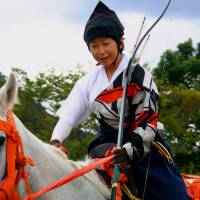 It is believed that yabusame was first performed in the Usa region of Kyushu by order of Emperor Kimmei (509-571) at the site of Usa Shrine (the earliest Hachiman shrine in Japan) to pray for peace and abundant harvests. However, the first recorded yabusame performance was in 1096, for the retired Emperor Shirakawa. Hachiman is a popular deity who protects warriors, agriculture and generally looks after the well-being of the community.
It is believed that yabusame was first performed in the Usa region of Kyushu by order of Emperor Kimmei (509-571) at the site of Usa Shrine (the earliest Hachiman shrine in Japan) to pray for peace and abundant harvests. However, the first recorded yabusame performance was in 1096, for the retired Emperor Shirakawa. Hachiman is a popular deity who protects warriors, agriculture and generally looks after the well-being of the community.
Today, this spectacular ritual is performed at famous shrines such as Tsurugaoka Hachimangu in Kamakura and Meiji Jingu in Tokyo. These contests attract thousands of spectators, who come to marvel at the sight of mounted archers in sumptuous costumes firing arrows at stationary targets while charging at full gallop.
The display we have come to see in the tiny village of Togouchi, however, is far less grand. Although the event dates back to 1439, during the Muromachi Period, it stopped being held at some point and was revived in 1991 after a long absence. It’s now held annually on the first Sunday of October and is the only yabusame contest still held in Hiroshima Prefecture.
As we motor on through magnificent forest-clad mountains, following the majestically broad Ota River, our pulses quicken as we see the flapping flags and bright banners that confirm we’re in the right place. The event is billed as “A rare opportunity to see yabusame in Hiroshima Prefecture,” so we’ve arrived nice and early to make sure we get a good place.
We needn’t have worried: The riverside track is empty except for a long line of tripods, left by their owners to secure the best viewing spots. One of the few people there is an old-timer with a weather-beaten face under a big, straw hat. It turns out he’s something of a yabusame veteran. He’s been to “the big one” in Kyushu, and recommends going to another popular contest, “around cherry blossom time,” down in Tsuwano, Yamaguchi-ken,
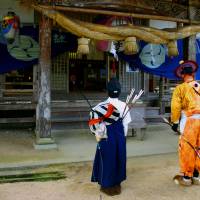 “Where is everybody today?” Angeles asks him. “Up at the shrine, for the ceremony,” he answers, nodding toward the hill over the road. Not wanting to miss out, we trot up to the shrine.
“Where is everybody today?” Angeles asks him. “Up at the shrine, for the ceremony,” he answers, nodding toward the hill over the road. Not wanting to miss out, we trot up to the shrine.
Togouchi’s Hori Hachiman shrine dates from 1715 and is one of roughly 25,000 Hachiman shrines in Japan. It’s shaded by several towering cedars, each looking like they’ve been there since Amaterasu Omikami — the Shinto Sun Goddess — left her cave and brought light to the world.
Inside the shrine, elders chant and bang drums for what seems like an eternity. The chanting, the doleful drumbeats and the creaking of the bamboo flagpoles are the only sounds to ruffle this sun-dappled morning.
We hang around with the ranks of photographers waiting patiently outside; the atmosphere is relaxed and friendly. This must be exactly what it’s not like at the big yabusame events in Tokyo and Kamakura. Here, the small-scale makes the ceremony’s ancient roots palpable — among the ancient trees, the Shinto kami (gods) loom closer.
A lady from the shrine comes and hands Angeles and I a happi coat each, a straight-sleeved cotton coat worn at festivals, which is the matsuri (Japanese festival) equivalent of a backstage pass. A white horse appears, led by a young boy holding a plastic bag and shovel to keep the path clean. Immediately, a new sound: the rapid chatter of dozens of cameras set on continuous-shooting mode.
A rider — tall, strong and resplendent in his silken robes — emerges from the shrine and mounts the steed. He’s Okazaki Susumu, the reigning champion. A priest comes out, blesses him and his horse by waving a haraegushi (sacred zigzag-shaped papers tied to a wand) over them, and ties a white prayer-paper to the horse’s mane.
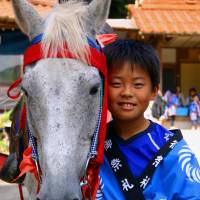 Another rider joins the group: Toshie Aoshiba, a female of archetypal jockey build, no more than half the size of Susumu. Now comes a pivotal yabusame moment, as the rider places an arrow in his bow and pulls the bowstring taut. With a folded prayer-paper clenched between his teeth, he ceremoniously aims his arrow — first at the ground and then at the sky, to symbolize harmony between heaven and Earth — before firing the arrow off into the distant forest canopy. Enthusiastic applause ensues.
Another rider joins the group: Toshie Aoshiba, a female of archetypal jockey build, no more than half the size of Susumu. Now comes a pivotal yabusame moment, as the rider places an arrow in his bow and pulls the bowstring taut. With a folded prayer-paper clenched between his teeth, he ceremoniously aims his arrow — first at the ground and then at the sky, to symbolize harmony between heaven and Earth — before firing the arrow off into the distant forest canopy. Enthusiastic applause ensues.
Finally the elders come down the steps from the shrine in their splendid gold robes and black, pointy hats or tortoise-shell-shaped helmets. The leader wears a red tengu mask, half-man, half-bird, with tufts of gray hair, a huge red nose and grotesque expression. A group of strong-armed firemen carry the mikoshi (a portable Shinto shrine) down the steep steps leading to the main road and off they all go. This sparks a veritable charge of the camera brigade.
We make quite a spectacle, parading down the side of the busy highway: The champ on the horse, the taiko drummer playing from the back of an open truck, the priests (and everyone else) following on foot, including the flute player, playing while he walks, and little kids in turquoise happi who pull the mikoshi on a trolley. The photographers trot backwards trying to keep a few steps in front of the procession to get good shots.
Finally we all arrive at the banks of the river, where mountains — the domain of bears and boar — reach right down to the 140-meter riding track. A sweet, smoky tang wafts up from a stall where mochi (soft rice cakes) are roasting over an open flame. Near the starting line, another ceremony is taking place at a small altar inside a roped-off square. A priest makes offerings of sake and mochi, then blesses the archers again. The weather is a perfect mix of sun and cloud — “not hot and not cold,” as the emcee observes in his preamble.
At last, the contest begins. The champ’s first shot shatters a wooden target with a resounding thwack. The small crowd erupts in a huge round of applause. The female rider fails to hit the target on her first run but is warmly applauded for the speed of her horse’s gallop. After each round the targets are presented to the judges for inspection.
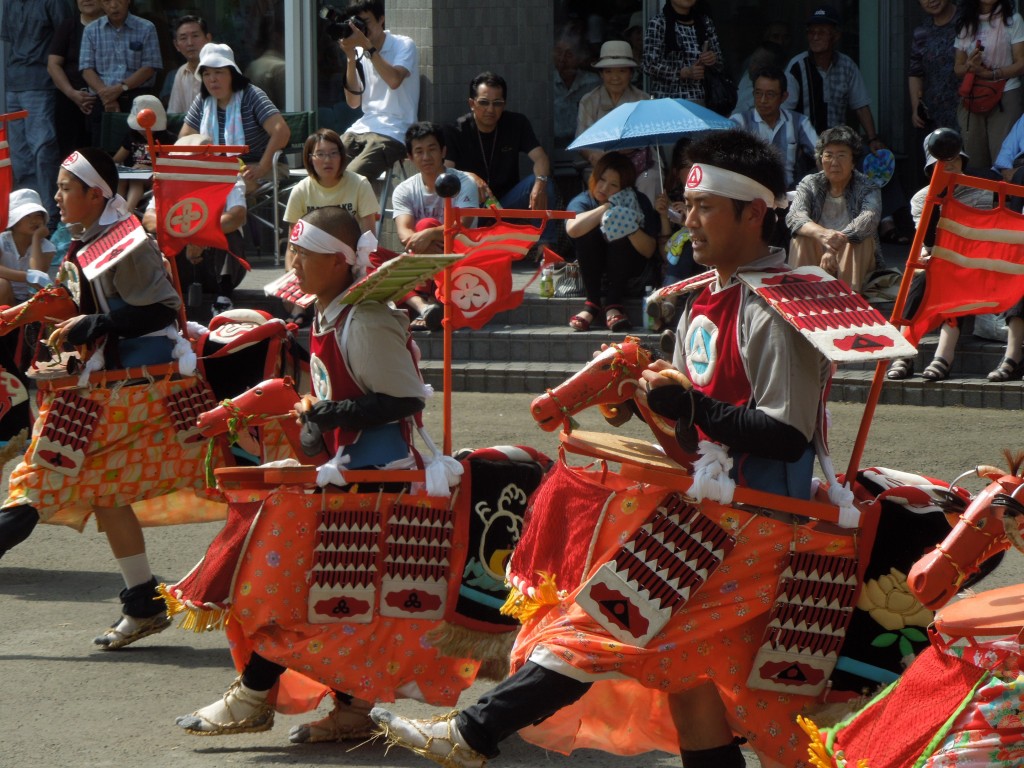
Warrior skills, here celebrated at a Tohoku festival, were an important part of medieval life in Japan
Both riders take turns shooting at three square targets 60 cm wide, spaced about 63 meters apart, positioned 2 meters to the left of the track where they will gallop. Statistics aside, I’m in awe of how they manage to charge full-tilt while their arms are raised shoulder-high to fire the arrow.
The actual yabusame lasts just 30 minutes, after which it’s time to go back up to the shrine for goodbyes. We congratulate the archers on their amazing riding skills and with typical Japanese modesty, Aoshiba laughs it off. “I’ve been doing yabusame for four years, but I get so few opportunities to practice from one year to the next that I never get much better!”
Just as we’re leaving, I hear a voice calling out to me. It turns out that as all the firemen are taking down the banners and dismantling the targets, the elders need help carrying the mikoshi (and the deity inside) back up to the shrine. I never imagined that such a small object could be so heavy. Still, we were given a bag of okashi (snacks) for our efforts. They are meant for the kids really, but it was a nice gesture.
With the deity safely put away, Angeles asks one of the women about those scarecrow figures we’d been seeing all day. It turns out they have nothing to do with birds at all. With the depopulation of the countryside, the lady explains, mountain villages are becoming emptier and these humanlike dolls help make the place seem less lonely.
Life in these mountain villages is still all about that human connection. Even a symbolic population is preferable to the loneliness of empty spaces.
***********************************************
Getting there: Togouchi is a 2.5-hour bus ride from Hiroshima City. Shinkansen and flights leave daily from Osaka and Tokyo for Hiroshima Prefecture.


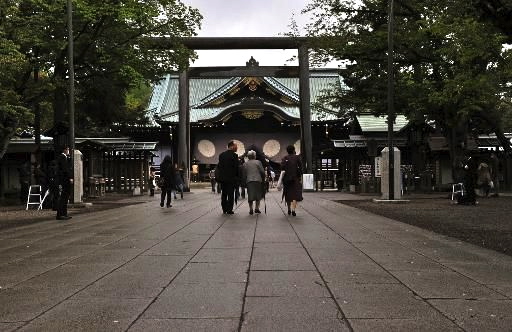
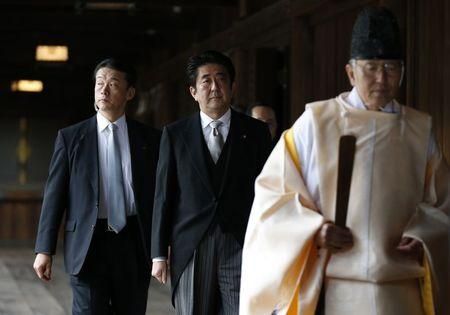
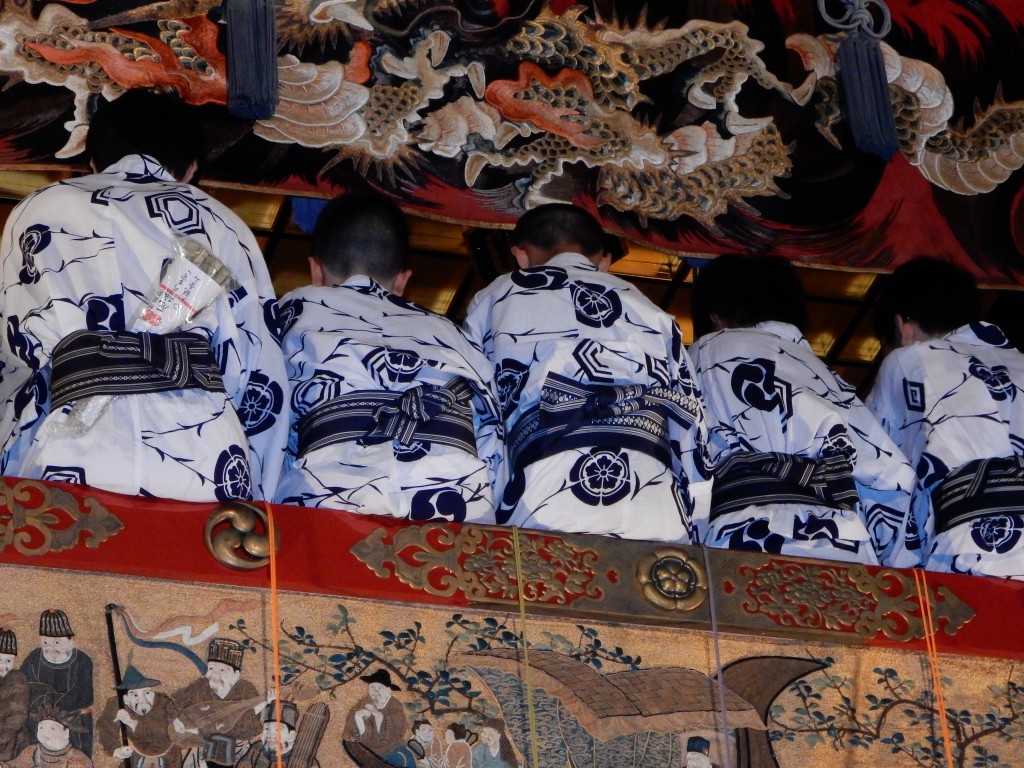
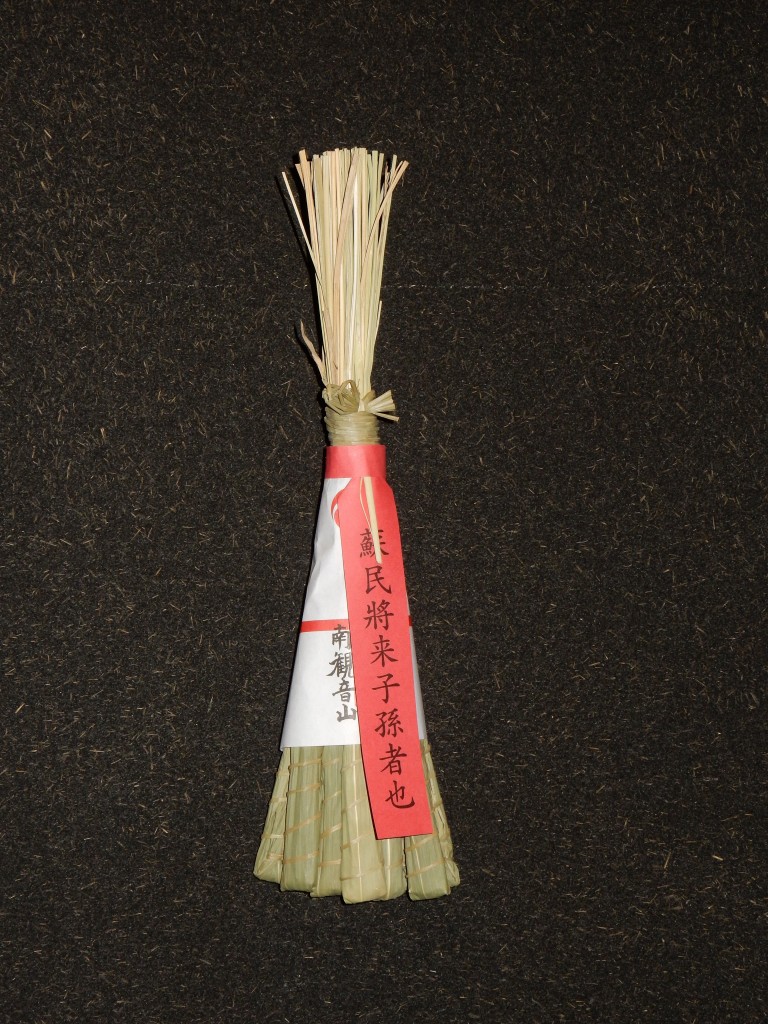
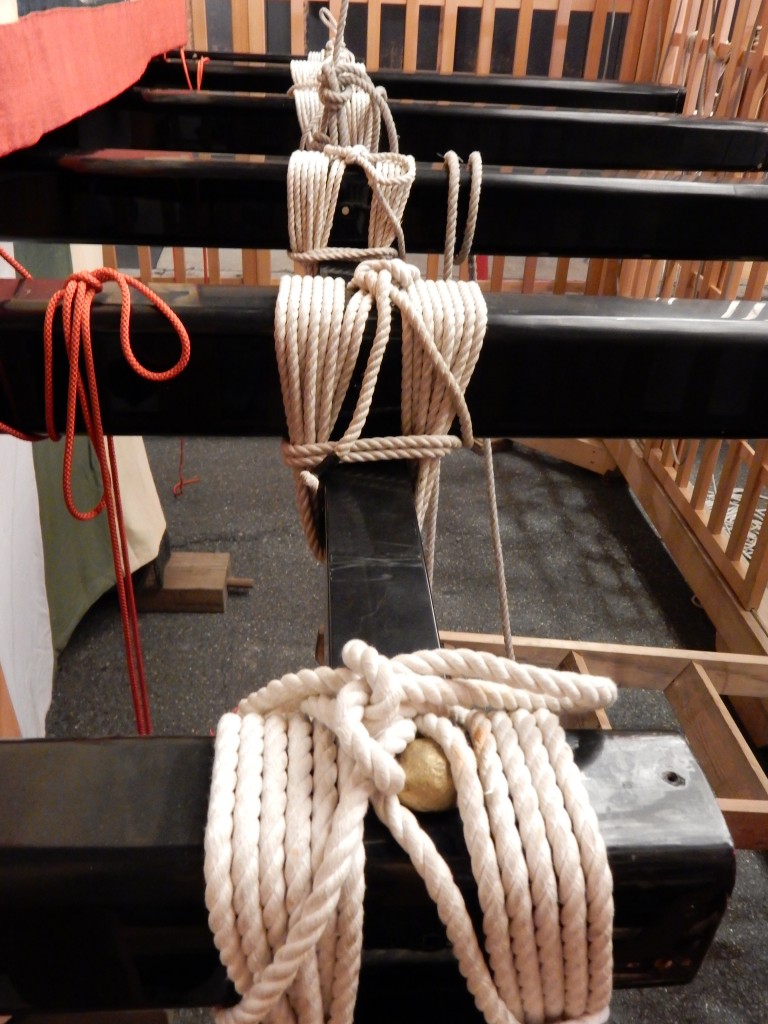
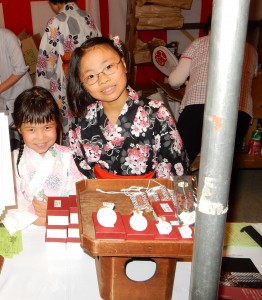
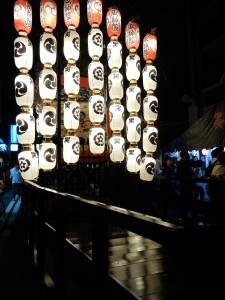
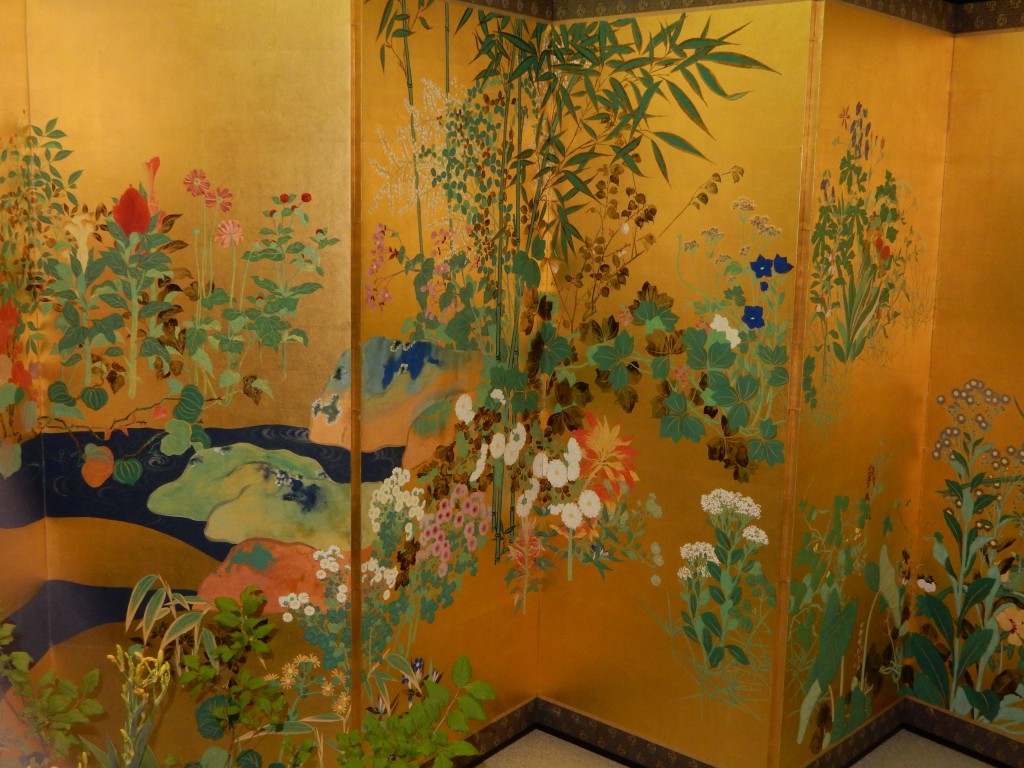

 By way of celebration, Japan Today carried a piece about a portable shrine being ferried across Matsushima Bay, north of Tokyo. It was part of the 67th Shiogama Port Festival in Shiogama City, Miyagi Prefecture. Two local mikoshi were paraded through the streets before being loaded aboard decorative boats and transported throughout the bay, accompanied by up to 100 fishing vessels.
By way of celebration, Japan Today carried a piece about a portable shrine being ferried across Matsushima Bay, north of Tokyo. It was part of the 67th Shiogama Port Festival in Shiogama City, Miyagi Prefecture. Two local mikoshi were paraded through the streets before being loaded aboard decorative boats and transported throughout the bay, accompanied by up to 100 fishing vessels.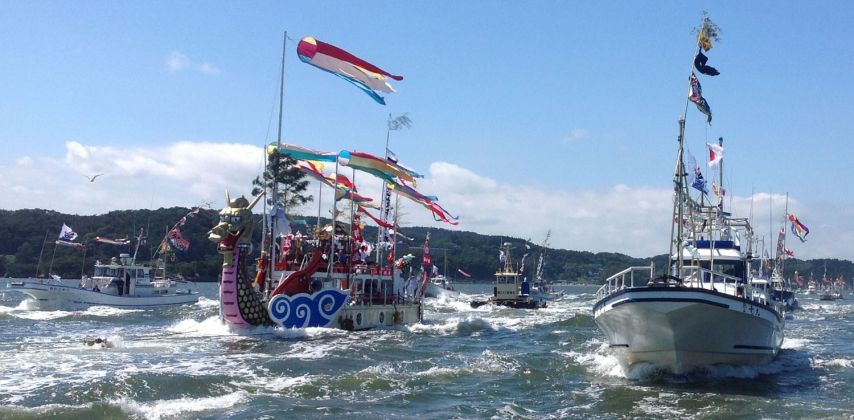
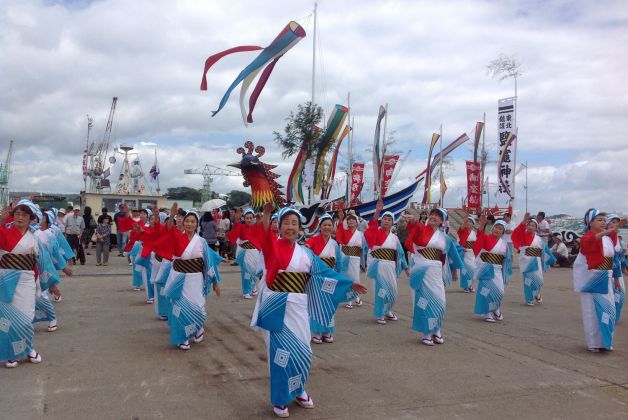

 It is believed that yabusame was first performed in the Usa region of Kyushu by order of Emperor Kimmei (509-571) at the site of Usa Shrine (the earliest Hachiman shrine in Japan) to pray for peace and abundant harvests. However, the first recorded yabusame performance was in 1096, for the retired Emperor Shirakawa. Hachiman is a popular deity who protects warriors, agriculture and generally looks after the well-being of the community.
It is believed that yabusame was first performed in the Usa region of Kyushu by order of Emperor Kimmei (509-571) at the site of Usa Shrine (the earliest Hachiman shrine in Japan) to pray for peace and abundant harvests. However, the first recorded yabusame performance was in 1096, for the retired Emperor Shirakawa. Hachiman is a popular deity who protects warriors, agriculture and generally looks after the well-being of the community. “Where is everybody today?” Angeles asks him. “Up at the shrine, for the ceremony,” he answers, nodding toward the hill over the road. Not wanting to miss out, we trot up to the shrine.
“Where is everybody today?” Angeles asks him. “Up at the shrine, for the ceremony,” he answers, nodding toward the hill over the road. Not wanting to miss out, we trot up to the shrine. Another rider joins the group: Toshie Aoshiba, a female of archetypal jockey build, no more than half the size of Susumu. Now comes a pivotal yabusame moment, as the rider places an arrow in his bow and pulls the bowstring taut. With a folded prayer-paper clenched between his teeth, he ceremoniously aims his arrow — first at the ground and then at the sky, to symbolize harmony between heaven and Earth — before firing the arrow off into the distant forest canopy. Enthusiastic applause ensues.
Another rider joins the group: Toshie Aoshiba, a female of archetypal jockey build, no more than half the size of Susumu. Now comes a pivotal yabusame moment, as the rider places an arrow in his bow and pulls the bowstring taut. With a folded prayer-paper clenched between his teeth, he ceremoniously aims his arrow — first at the ground and then at the sky, to symbolize harmony between heaven and Earth — before firing the arrow off into the distant forest canopy. Enthusiastic applause ensues.
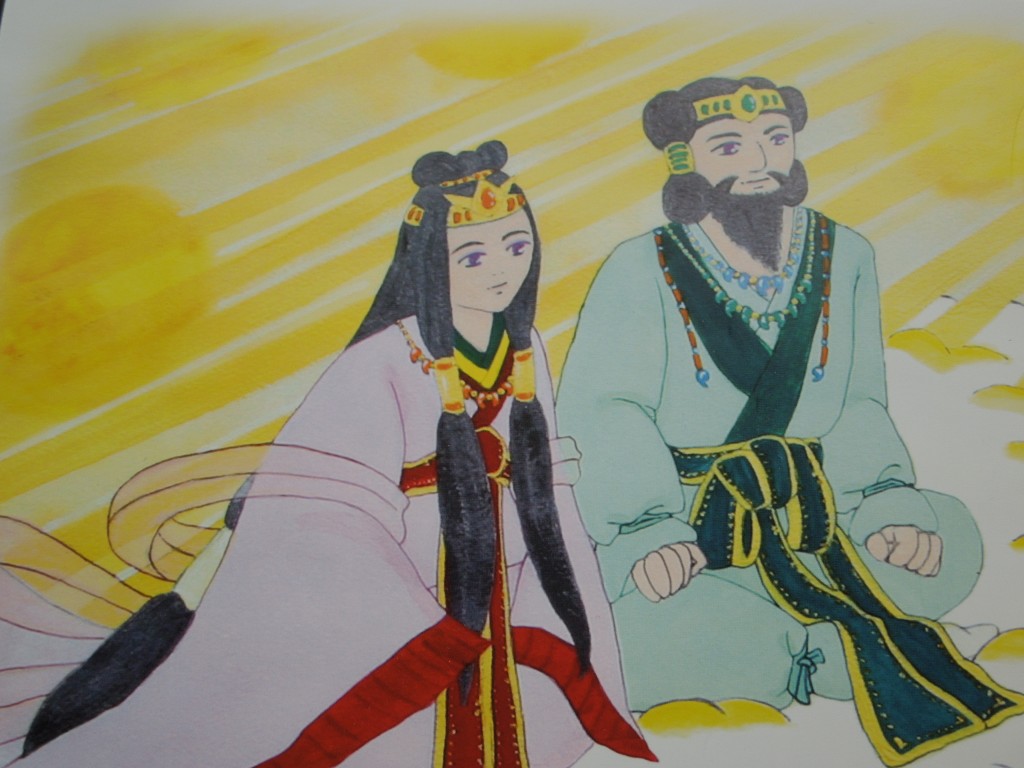
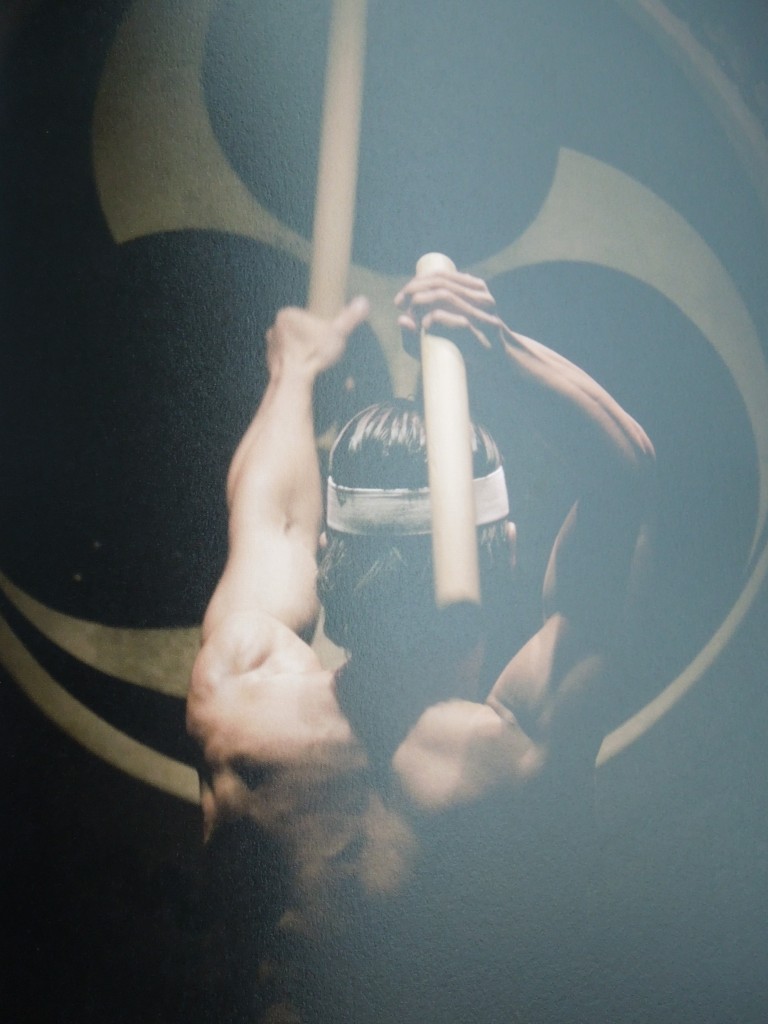 Tosha says he achieves such intensity by using classical techniques as a base for his performances. Not solely focusing on the music, though, he also emphasizes visual presentation through dancing and dialogue. The result produces energetic moments that can just as easily slip into a moment of calm.
Tosha says he achieves such intensity by using classical techniques as a base for his performances. Not solely focusing on the music, though, he also emphasizes visual presentation through dancing and dialogue. The result produces energetic moments that can just as easily slip into a moment of calm.